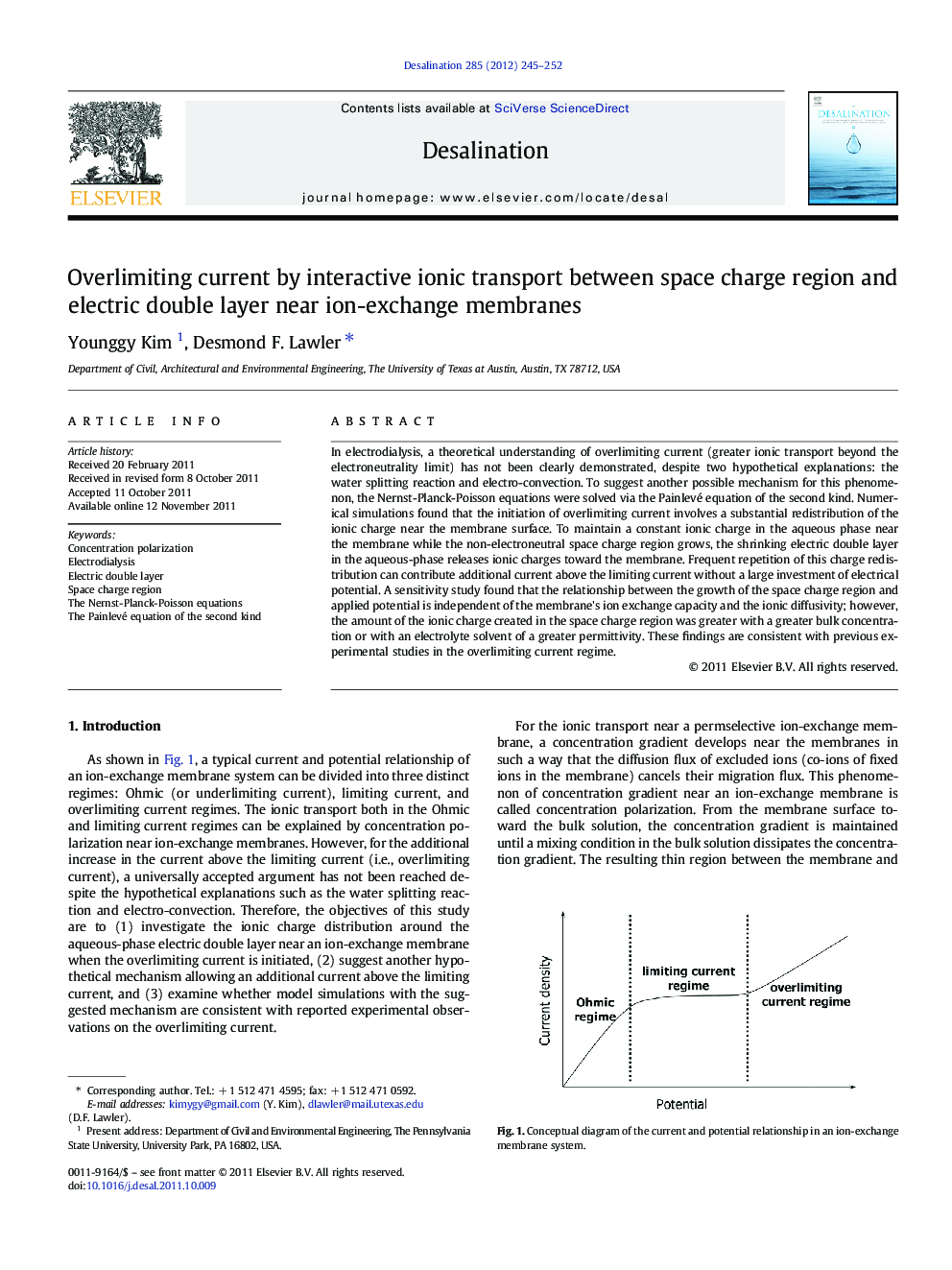| Article ID | Journal | Published Year | Pages | File Type |
|---|---|---|---|---|
| 624733 | Desalination | 2012 | 8 Pages |
In electrodialysis, a theoretical understanding of overlimiting current (greater ionic transport beyond the electroneutrality limit) has not been clearly demonstrated, despite two hypothetical explanations: the water splitting reaction and electro-convection. To suggest another possible mechanism for this phenomenon, the Nernst-Planck-Poisson equations were solved via the Painlevé equation of the second kind. Numerical simulations found that the initiation of overlimiting current involves a substantial redistribution of the ionic charge near the membrane surface. To maintain a constant ionic charge in the aqueous phase near the membrane while the non-electroneutral space charge region grows, the shrinking electric double layer in the aqueous-phase releases ionic charges toward the membrane. Frequent repetition of this charge redistribution can contribute additional current above the limiting current without a large investment of electrical potential. A sensitivity study found that the relationship between the growth of the space charge region and applied potential is independent of the membrane's ion exchange capacity and the ionic diffusivity; however, the amount of the ionic charge created in the space charge region was greater with a greater bulk concentration or with an electrolyte solvent of a greater permittivity. These findings are consistent with previous experimental studies in the overlimiting current regime.
Graphical abstractFigure optionsDownload full-size imageDownload as PowerPoint slideHighlights► As the space charge region grows, the electric double layer releases ionic charge. ► The released ionic charge contributes to overlimiting current. ► This overlimiting current mechanism is consistent with reported experimental trends.
